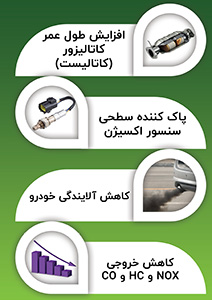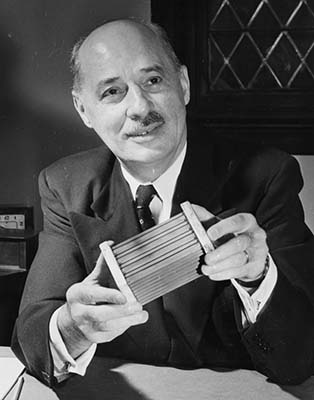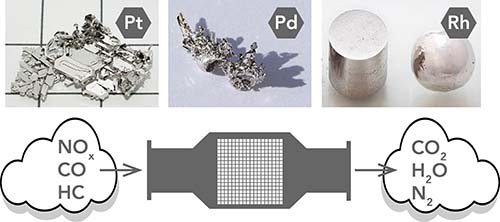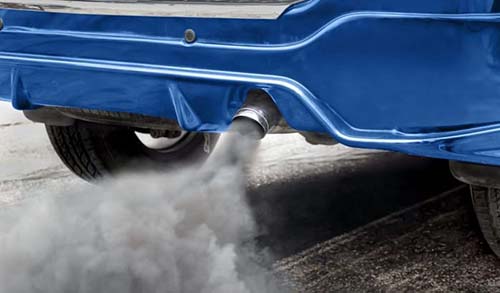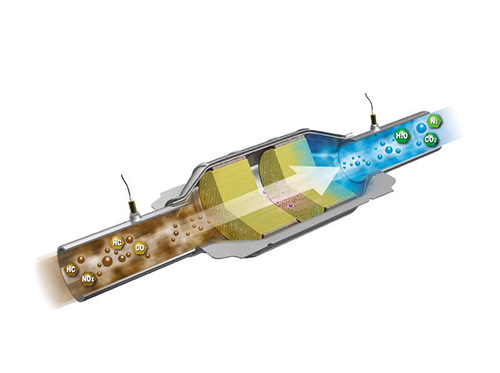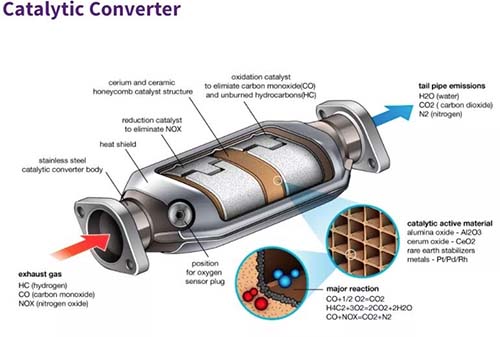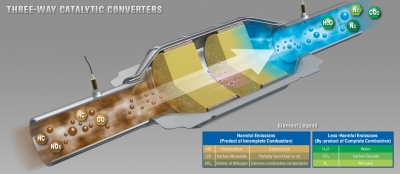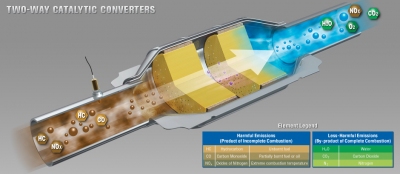مبدل کاتالیزور چیست؟
What is a catalytic converter?
Cars generate a great deal of fumes and gases, also known as emissions, when they’re running.
Emissions contribute to air pollution, which is why the Clean Air Act was passed in the United States in 1963 to help reduce the amount of pollution produced by a range of industries.
The National Emissions Standards Act, an amendment made in 1965 to the Clean Air Act, set the first federal vehicle emissions standards.
The modern exhaust system on vehicles features a range of parts that helps control emissions and make them more environmentally friendly.
Among these parts is a catalytic converter, which helped many car manufacturers meet the standards set by the National Emissions Standards Act.
A catalytic converter is an important part of the exhaust system and by now you’re probably wondering what does a catalytic converter do?
Keep reading to find out more about the role it plays in your car.
Who Invented the Catalytic Converter?
e history of the catalytic converter dates to the end of the 19th century, when some prototypes were developed in France.
In the mid-1950s Eugene Houdry, a French mechanical engineer, received a patent for his research to develop catalytic converters for gasoline engines.
Houdry’s development of the catalytic converter came from his concerns about the toll smokestack and automobile exhaust was having on air pollution.
He had seen results of studies in Los Angeles and started working on converters for smokestacks.
Catalytic converters were further developed after the emissions control regulations that began in the early 1960s.
The first production catalytic converter was created in 1973 at Engelhard Corporation, and widespread use of the part began around 1975.
What Does the Catalytic Converter Do?
A catalytic converter uses a chamber called a catalyst to change the harmful compounds from an engine’s emissions into safe gases, like steam.
It works to split up the unsafe molecules in the gases that a car produces before they get released into the air.
Gases are brought in from the “input” pipe connected to the engine of a vehicle.
These are blown over the catalyst, which causes a chemical reaction that breaks apart the pollutants.
The less-harmful gases now travel through the second pipe, or the “output,” that is connected to a car’s tailpipe.
Which harmful gases does a catalytic converter protect against?
The three gases that are:
damaging to the atmosphere are Hydrocarbons ,Carbon Monoxide and Nitrogen Oxides .
It is the job of the catalytic converter to convert these gases into ‘friendly gases’ to prevent smog and acid rain.
The catalytic converter is the most pivotal part of the emissions control system and was first created in 1975.
Nowadays, many diesel cars are fitted with a diesel particulate filter- this removes a higher number of particulates and helps in soot reduction.
What Is Inside a Catalytic Converter?
The catalyst inside a catalytic converter is made typically from platinum or a similar metal, such as rhodium or palladium.
Gases flow through a ceramic honeycomb structure located within the cat housing.
This is lined with metals that have specific jobs that play a role in reducing emissions.
There are two main types of catalysts that might be featured in a car:
Reduction catalysts: Help reduce nitrogen oxide pollution by removing oxygen.
Nitrogen oxides are broken up into nitrogen and oxygen gases, which on their own are harmless.
Oxidation catalysts: Used to change carbon monoxide into carbon dioxide through an opposite process of adding oxygen.
Also located near the catalytic converter is an oxygen (O2) sensor , which works to tell a car’s electronic control unit (ECU) how much oxygen is found in the exhaust gases.
This helps a vehicle run on a more efficient air/fuel ratio, allowing the engine to supply the converter with enough oxygen to complete the oxidation process.
Types of Catalytic Converters
As mentioned before, there are two primary catalysts – reduction and oxidation – that can be used within an exhaust system to handle specific gases.
There are two primary kinds of catalytic converters:
Two-way:
The two-way catalytic converter was present on vehicles in the United States until 1981.
They only have oxidation catalysts, which help change carbon monoxide to carbon dioxide.
Hydrocarbons (which is unburned and partially burned fuel) are changed to carbon dioxide and water.
Three-way:
Since 1981, the three-way catalytic converter has been used.
This performs the same as the two-way converter with the addition of a reduction catalyst.
As stated earlier, this is used to change nitrogen oxides to nitrogen and oxygen gases.
Diesel engines employ the use of two-way catalysts, and the converters are also specifically designed to work with diesel exhausts.
The converters for these types of engines try and target particulates known as soluble organic fractions.
These are made from hydrocarbons bound to soot.
How long do catalytic converters last?
A catalytic converter can last up to 10 years, however, this will depend on your driving style and how often you drive your vehicle.
10 years equates to on average around 70,000 to 100,000 miles , so if you drive your car regularly, then your catalytic converter may need changing sooner.
It is important to note that a faulty catalytic converter can result in an MOT failure.



